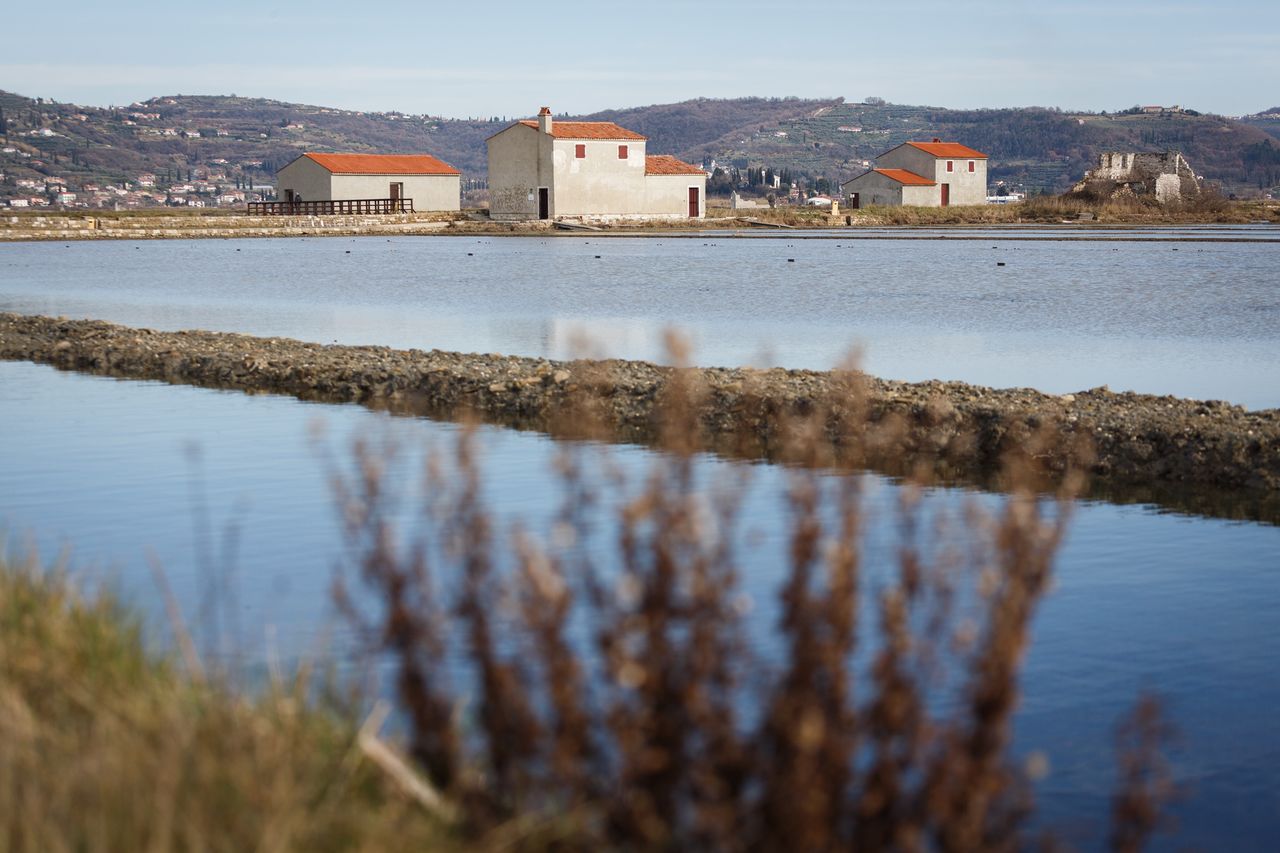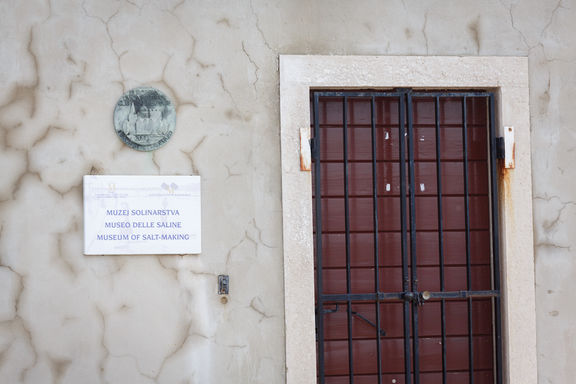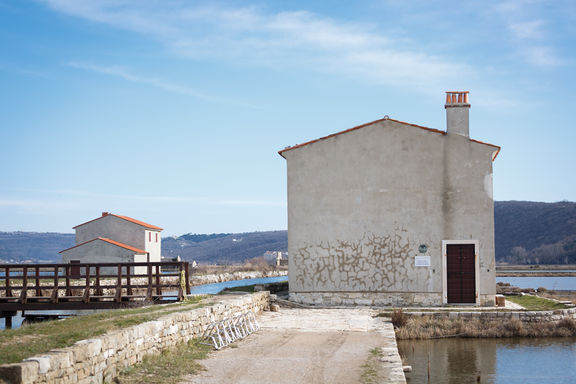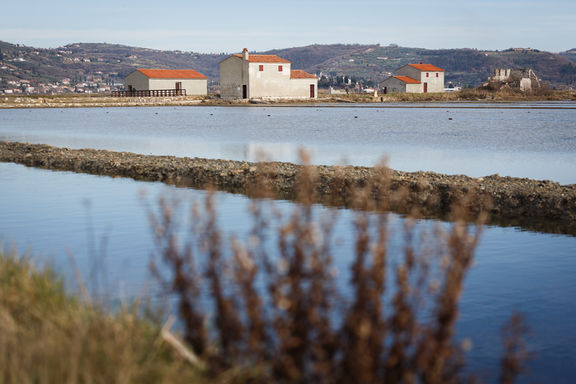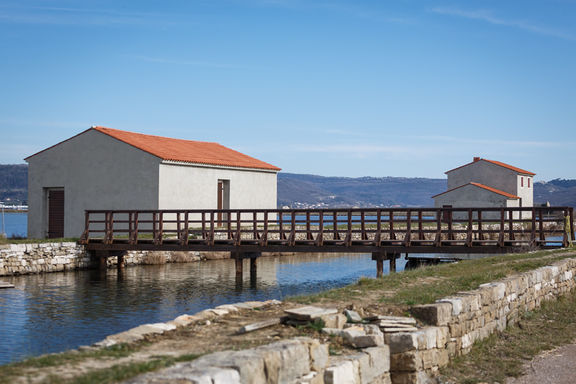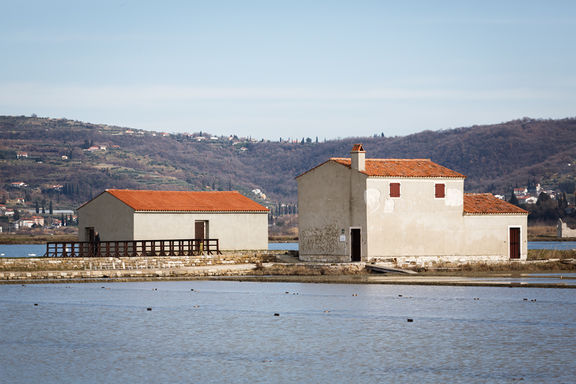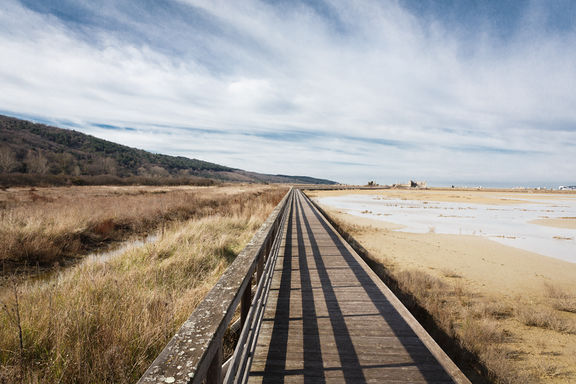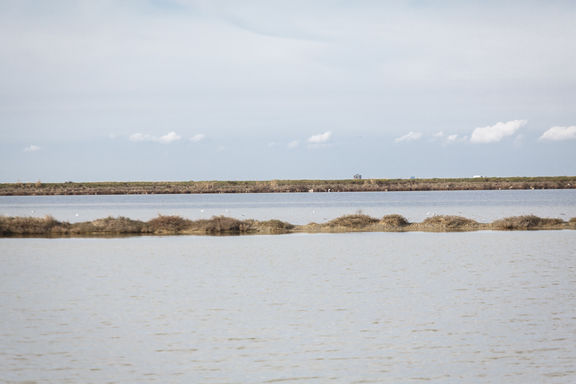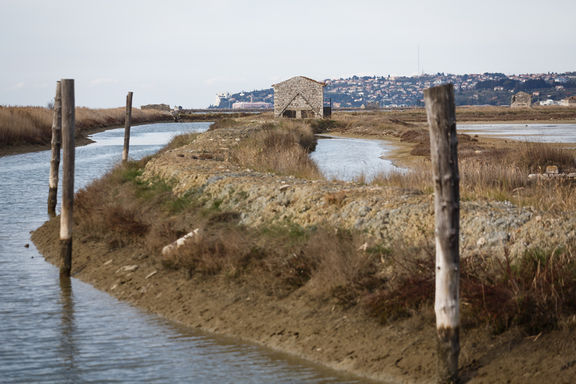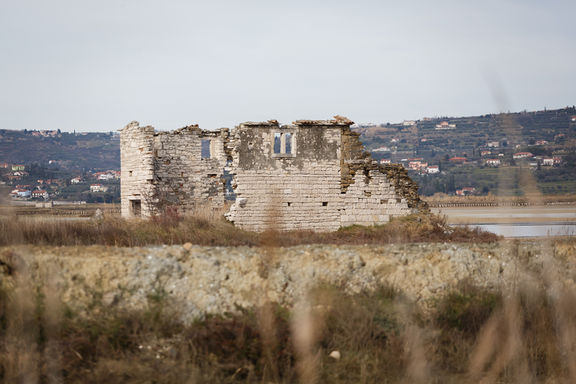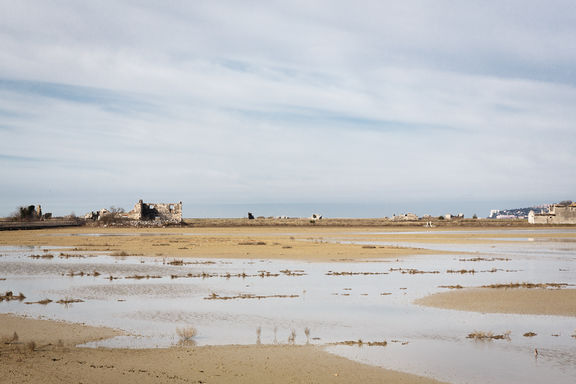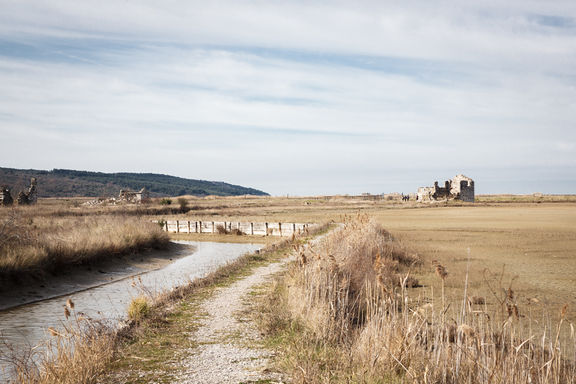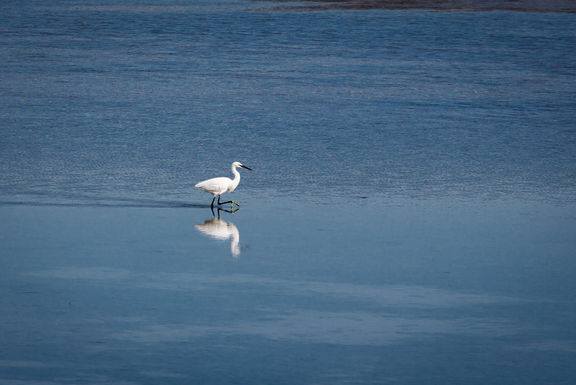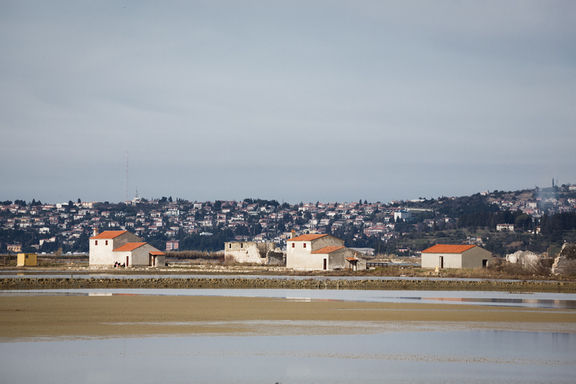Difference between revisions of "Museum of Salt Making, Sečovlje"
(Salina) |
(added cat Category:Natural heritage) |
||
| (10 intermediate revisions by 3 users not shown) | |||
| Line 1: | Line 1: | ||
{{Article | {{Article | ||
| − | | status = | + | | status = |
| maintainer = Janez Premk | | maintainer = Janez Premk | ||
}} | }} | ||
| Line 6: | Line 6: | ||
| name = Museum of Salt Making, Sečovlje | | name = Museum of Salt Making, Sečovlje | ||
| localname = Muzej solinarstva v Sečovljah | | localname = Muzej solinarstva v Sečovljah | ||
| − | | street = Seča 115 | + | | street = Seča 115 |
| − | | town | + | | town = SI-6320 Portorož/Portorose |
| mailing address = Cankarjevo nabrežje, P O Box 103, SI-6330 Piran, Slovenia | | mailing address = Cankarjevo nabrežje, P O Box 103, SI-6330 Piran, Slovenia | ||
| telephone = 386 (0) 5 671 0040 | | telephone = 386 (0) 5 671 0040 | ||
| fax = 386 (0) 5 671 0050 | | fax = 386 (0) 5 671 0050 | ||
| email = muzej@pommuz-pi.si | | email = muzej@pommuz-pi.si | ||
| − | | website = http:// | + | | website = http://www.pomorskimuzej.si/sl/muzej-solinarstva |
| − | | managed by = Sergej Mašera Maritime Museum, Piran | + | | managed by = Sergej Mašera Maritime Museum, Piran |
| − | | opening hours | + | | opening hours = 9am–6pm Tue–Sun Apr–May, 9am–8pm Tue–Sun Jun–Aug. Closed Mon, Nov–Mar. For announced groups by arrangement. |
| contacts = {{Contact | | contacts = {{Contact | ||
| − | | name = | + | | name = Franco Juri |
| role = Director | | role = Director | ||
| − | | email = | + | | email = franco.juri@guest.arnes.si |
| + | }}{{Contact | ||
| + | | name = Uroš Hribar | ||
| + | | role = Curator of the museum | ||
| + | | email = muzej@pommuz-pi.si | ||
}} | }} | ||
}} | }} | ||
{{Teaser| | {{Teaser| | ||
| − | Established in [[established::1991]] amidst the former Sečovlje Salina (salt pans) – now the protected Sečovlje Regional Park – on the right bank of the Giassi channel, the [[Museum of Salt Making, Sečovlje]] comprises a salt maker's dwelling with attached bread oven and several salt pans. Among the once numerous salt-pans in the Gulf of Trieste only those in Sečovlje and Strunjan have been preserved, therefore representing ethnological, technical, historical, settlement, and landscape heritage of exceptional significance. The Sečovlje salt pans are internationally important wetlands and were thus listed on the Ramsar List in 1993. | + | {{Wide image|Museum of Salt Making Secovlje 2020 Exterior Photo Kaja Brezocnik (2).jpg}} |
| + | Established in [[established::1991]] amidst the former Sečovlje Salina (salt pans) – now the protected Sečovlje Regional Park – on the right bank of the Giassi channel, the [[Museum of Salt Making, Sečovlje]] comprises a salt maker's dwelling with attached bread oven and several salt pans. Among the once numerous salt-pans in the Gulf of Trieste only those in Sečovlje and Strunjan have been preserved, therefore representing ethnological, technical, historical, settlement, and landscape heritage of exceptional significance. The Sečovlje salt pans are internationally important wetlands and were thus listed on the Ramsar List in 1993. In 2015 the traditional salt making was listed in the [[:Category:Intangible heritage|national register of intangible heritage]]. | ||
}} | }} | ||
| Line 29: | Line 34: | ||
The oldest saying about Piran tells: ''"Piran xe fato de sal!"'' ("Piran was made out of salt!") Salt making was one of the major economic branches of Piran (beside fishing and craft) which enabled the development of the town. The citizens had two dwellings, in Piran during the winter and in Sečovlje during the summer, when the salt making season began. | The oldest saying about Piran tells: ''"Piran xe fato de sal!"'' ("Piran was made out of salt!") Salt making was one of the major economic branches of Piran (beside fishing and craft) which enabled the development of the town. The citizens had two dwellings, in Piran during the winter and in Sečovlje during the summer, when the salt making season began. | ||
| − | The Sečovlje Regional Park covers about 650 | + | The Sečovlje Regional Park covers about 650 hectares along the Slovene-Croatian boundary with he active salt making taking place in its northern part, called Lera. The southern part, called Fontanigge, is separated by the bed of the Drnica Stream and overgrown by salt-loving vegetation – halophytes. The Fontanigge is knit with large basins, criss-crossed by the system of ancient levees. Along the former salt pan are scattered stone made houses, which co-create the truly unique image of the ''salina'' landscape. The traditional way of salt making, originating from the 14th century, was abandoned in the 1960s, but is still practised within the Museum of Salt making. |
The Sečovlje salt pans are a scene of [[Genius Loci Lera Workshop]], organised annually by [[Obalne galerije - Coastal Galleries]] and the Soline Pridelava soli company within the [[Ex-tempore Piran - International Painting and Ceramics]] festival since 2003. | The Sečovlje salt pans are a scene of [[Genius Loci Lera Workshop]], organised annually by [[Obalne galerije - Coastal Galleries]] and the Soline Pridelava soli company within the [[Ex-tempore Piran - International Painting and Ceramics]] festival since 2003. | ||
| Line 37: | Line 42: | ||
The museum is organised within a renovated salt pan house ''Caserma''. The artefacts, photographs and texts which form the collection illustrate the working and living environment of the salt makers. On the ground floor visitors can learn about the development of salt making in the north-east Adriatic. Tools used for work in the salt pans and store houses are displayed here, and in nearby restored salt pans a group of salt workers demonstrate traditional methods. | The museum is organised within a renovated salt pan house ''Caserma''. The artefacts, photographs and texts which form the collection illustrate the working and living environment of the salt makers. On the ground floor visitors can learn about the development of salt making in the north-east Adriatic. Tools used for work in the salt pans and store houses are displayed here, and in nearby restored salt pans a group of salt workers demonstrate traditional methods. | ||
| + | |||
In the Lera Centre of Salt Making one can see a film on the cultural heritage of Sečovlje, in a multi vision room throug modern technology one can explore the salt pans, flora and fauna, commonly invisible to the common visitor. | In the Lera Centre of Salt Making one can see a film on the cultural heritage of Sečovlje, in a multi vision room throug modern technology one can explore the salt pans, flora and fauna, commonly invisible to the common visitor. | ||
| Line 42: | Line 48: | ||
* [[Genius Loci Lera Workshop]] | * [[Genius Loci Lera Workshop]] | ||
* [[Ex-tempore Piran - International Painting and Ceramics]] | * [[Ex-tempore Piran - International Painting and Ceramics]] | ||
| − | + | * [[Sergej Mašera Maritime Museum, Piran]] | |
* [[Tona’s House - St Peter's Ethnological Collection]] | * [[Tona’s House - St Peter's Ethnological Collection]] | ||
| − | * [[ | + | * [[Monfort Exhibition Space]] |
| − | |||
== External links == | == External links == | ||
| − | * [http:// | + | * [http://www.pomorskimuzej.si/sl/muzej-solinarstva Museum of Salt Making, Sečovlje web page] |
| + | * [http://www.kpss.si/en/intro Sečovlje Salina Nature Park] | ||
* [http://www.soline.si/?lang=eng SOLINE Pridelava soli company website] | * [http://www.soline.si/?lang=eng SOLINE Pridelava soli company website] | ||
* [http://sl.wikipedia.org/wiki/Se%C4%8Doveljske_soline Sečovlje salt pans on Wikipedija] (in Slovenian) | * [http://sl.wikipedia.org/wiki/Se%C4%8Doveljske_soline Sečovlje salt pans on Wikipedija] (in Slovenian) | ||
| − | |||
| + | {{Gallery}} | ||
[[Category:Museums]] | [[Category:Museums]] | ||
[[Category:Industrial and technical heritage]] | [[Category:Industrial and technical heritage]] | ||
| + | [[Category:Intangible heritage]] | ||
| + | [[Category:Natural heritage]] | ||
Latest revision as of 16:53, 17 November 2020
Background
The oldest saying about Piran tells: "Piran xe fato de sal!" ("Piran was made out of salt!") Salt making was one of the major economic branches of Piran (beside fishing and craft) which enabled the development of the town. The citizens had two dwellings, in Piran during the winter and in Sečovlje during the summer, when the salt making season began.
The Sečovlje Regional Park covers about 650 hectares along the Slovene-Croatian boundary with he active salt making taking place in its northern part, called Lera. The southern part, called Fontanigge, is separated by the bed of the Drnica Stream and overgrown by salt-loving vegetation – halophytes. The Fontanigge is knit with large basins, criss-crossed by the system of ancient levees. Along the former salt pan are scattered stone made houses, which co-create the truly unique image of the salina landscape. The traditional way of salt making, originating from the 14th century, was abandoned in the 1960s, but is still practised within the Museum of Salt making.
The Sečovlje salt pans are a scene of Genius Loci Lera Workshop, organised annually by Obalne galerije - Coastal Galleries and the Soline Pridelava soli company within the Ex-tempore Piran - International Painting and Ceramics festival since 2003.
Collections
Within the Sečovlje Regional Park one can see the abandoned and the still functioning salt fields, channels and levees with stone walls, steps and sluice gates (with only their stone parts preserved), paths, bridges, wind pumps, and salt-pan houses, including their ruins and localities. The salt maker's dwelling is a two-storey house which functioned as both family residence on the first floor and salt storage on the ground floor.
The museum is organised within a renovated salt pan house Caserma. The artefacts, photographs and texts which form the collection illustrate the working and living environment of the salt makers. On the ground floor visitors can learn about the development of salt making in the north-east Adriatic. Tools used for work in the salt pans and store houses are displayed here, and in nearby restored salt pans a group of salt workers demonstrate traditional methods.
In the Lera Centre of Salt Making one can see a film on the cultural heritage of Sečovlje, in a multi vision room throug modern technology one can explore the salt pans, flora and fauna, commonly invisible to the common visitor.
See also
- Genius Loci Lera Workshop
- Ex-tempore Piran - International Painting and Ceramics
- Sergej Mašera Maritime Museum, Piran
- Tona’s House - St Peter's Ethnological Collection
- Monfort Exhibition Space
External links
- Museum of Salt Making, Sečovlje web page
- Sečovlje Salina Nature Park
- SOLINE Pridelava soli company website
- Sečovlje salt pans on Wikipedija (in Slovenian)



